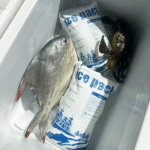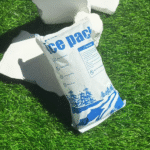Sombrero de paquete de hielo seco: How to Cap Your Cargo with Ultra‑Cold Confidence
Shipping frozen goods shouldn’t feel like a gamble. A dry ice pack hat—a molded cap of solid CO₂—adds a –78 °C shield on top of your load, Reducir los picos de temperatura en un 65 % y reducir las reclamaciones por deterioro a menos del 2 %.. En los próximos minutos, aprenderá por qué este sencillo “sombrero” supera a los pellets sueltos, cómo dimensionarlo, y que 2025 Etiquetas de seguridad que debes mostrar en el muelle..

-
¿Qué es un gorro con bolsa de hielo seco para envíos y por qué usarlo??
-
¿Qué talla de sombrero funciona mejor para la comida?, biológicos, o combinaciones de gel y bolsa de hielo seco?
-
¿Cómo lo nuevo? 2025 Las reglas de IATA y OSHA afectan el etiquetado y la ventilación?
-
¿Qué secuencia de embalaje mantiene los productos congelados durante 72 horas??
-
¿Qué tendencias tecnológicas redefinirán el rendimiento del sombrero con bolsa de hielo seco??
¿Qué es exactamente un gorro con bolsa de hielo seco para envío??
A dry ice pack hat is a pre‑formed slab of compressed dry ice that nests over products like a lid, delivering steady –78 °C airflow downward. Its uniform shape slows sublimation by 30 % versus pellets and prevents cold “hotspots” that crack packaging.
Unlike flat sheets, the hat’s raised rim channels CO₂ gas toward side vents, protecting delicate cartons from direct blast frost. You get cleaner loads, lighter conditioning, and easier stacking in tight coolers.
How Does a Dry Ice Pack Hat Improve Thermal Hold?
| Métrica de rendimiento | Pellets sueltos | Sombrero de paquete de hielo seco | Impacto práctico |
|---|---|---|---|
| Temp rise to –40 °C | 18 H | 42 H | Longer buffer for delays |
| CO₂ gas burst risk | Moderado | Bajo | Fewer pressure‑alarm events |
| Worker touchpoints | 3–4 scoops | 1 colocación | Faster pack‑out lines |
Sizing Your Dry Ice Pack Hat Correctly
Choose hat weight by lane duration and box footprint, no conjeturas. Follow the quick rule: hat mass = 0.4 × box base area (kilos) for 48‑hour transit at ≤ 30 °C.
| Box Base (cm²) | Transit ≤ 24 h | 24–48h | > 48h | Lo que esto significa para ti |
|---|---|---|---|---|
| 900 | 0.3 kg | 0.5 kg | 0.8 kg | Saves coolant weight on quick routes |
| 1,600 | 0.6 kg | 1.0 kg | 1.4 kg | Costo equilibrado & resistencia |
| 2,400 | 0.9 kg | 1.4 kg | 2.0 kg + transatlántico | Peace of mind on extreme lanes |
Caso del mundo real: A seafood exporter adopted 1 kg dry ice pack hats for 36‑hour flights and cut rejected pallets from 6.2 % to 1.7 % while shaving 12 % off coolant spend.
How Do You Pack with a Dry Ice Pack Hat for Maximum Hold?
Follow a top‑down layering method:
-
Load products inside an EPS or VIP shipper.
-
Add a spacer pad to create airflow gaps.
-
Position the dry ice pack hat flat, rim up—cold air will sink naturally.
-
Ventilarse la tapa: four 5 mm holes or a breathable foam plug.
-
Seal the box with reinforced tape and apply UN 1845 labels.
Why top placement matters: CO₂ gas descends. Placing the hat on top ensures blanket‑like cooling and prevents frostbite spots that occur when pellets sit beside cartons.
Hands‑On Safety When Handling a Dry Ice Pack Hat
-
Utilice guantes y gafas aislantes.. The slab’s –78 °C surface causes instant frostbite.
-
Use a clamp lifter—not fingertips—to avoid dropping the hat onto product edges.
-
Limit open‑time: every minute at room temp burns ~1 % of mass. Stage hats last.
¿Cuáles son los 2025 Regulations for Dry Ice Pack Hats?
Dry ice pack hats fall under UN 1845 “Dry Ice” but new guidance adds two must‑dos:
-
Hat Identifier: Packages must read “Dry Ice Pack Hat—Ventilated.”
-
QR Weight Tag: Airlines now scan a code showing initial hat mass for CO₂ tracking.
Non‑compliance can delay export or incur fines of USD 2 k per pallet. OSHA also requires hat handling SOPs in cold‑room training modules by July 2025.
2025 Trends Shaping Dry Ice Pack Hat Innovation
-
Honeycomb hats: Lightweight lattice cores reduce mass 20 % with identical hold time.
-
PCM‑hybrid rims: Combine –30 °C PCM in the rim to smooth end‑of‑life warming.
-
Películas de ventilación inteligentes: Membranes open at 1 psi, cutting burst risk in sealed containers.
Analysts predict an 8.7 % CAGR for dry ice pack hat demand through 2028, driven by cell‑therapy logistics and longer e‑grocery lanes.
Preguntas frecuentes
How long does a dry ice pack hat last?
Typically 36–48 hours at 25 °C ambient; add liners for 72 hours on hotter routes.
Can I reuse a dry ice pack hat?
Yes—if it retains at least 70 % of original mass and shows no cracks. Recharge in a blast freezer.
Is a hat safer than pellets?
Yes—lower surface area means slower gas release and less airborne CO₂ in pack‑out rooms.
What if my box tips sideways?
The hat’s rim holds position, preventing collisions that could crush cartons.
Control de llave
-
A dry ice pack hat acts like a frozen lid, extending freeze time and reducing mess.
-
Size the hat by footprint and lane duration; use the table for quick picks.
-
Top‑layer placement with vented lids prevents pressure build‑up.
-
2025 rules demand new “hat” labeling and QR mass tags—update your SOPs.
-
Lighter honeycomb and PCM‑hybrid hats will boost sustainability and performance.
Siguientes pasos
-
Download Tempk’s Hat Sizing Calculator to dial in exact weights.
-
Request sample hats for a lane‑simulation test—results in 48 hours.
-
Reservar una consulta with a Tempk thermal engineer to optimize your full pack‑out.
Acerca de Tempk
We engineer advanced cold‑chain solutions—from dry ice pack hats and gels to IoT‑enabled shippers. Our ISO 13485 plants and five CO₂‑hat patents keep your cargo cold, obediente, and cost‑efficient.
Ship smarter today—talk to Tempk.























